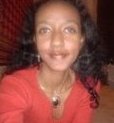Tadias Magazine
By Tseday Alehegn
Wednesday, August 24, 2011
New York (Tadias) – Ethiopian-American Solomon Assefa was recently chosen by Technology Review as one of 35 innovators under 35. His research focuses on developing more power-efficient and faster supercomputers by using chips that communicate via pulses of light rather than electrical signals. We interviewed Solomon briefly and asked him to share a bit more about himself and his insights on technological innovation.
Tadias: Tell us a bit about yourself. Where you grew up, went to school, what were your early passions?
Solomon: I was born and raised in Ethiopia. I completed elementary and high school in Addis Ababa (Del Betegel then later ICS). I then moved to the U.S. where I obtained a B.S., M.Eng, and PhD from MIT. Prior to attending MIT, I often thought about practicing law similar to my eldest brother. But I later realized that I enjoyed math, science and engineering.
Tadias: Who are your role models in the science world? and beyond?
Solomon: In the field of science, my professors and research colleagues continue to inspire me daily. In addition, my role model is my eldest brother, Bekure Assefa, who has been very instrumental throughout my life. He taught me to work hard, confront challenges with determination, and pursue my passion to the fullest. These guiding principles continue to be a source of motivation in my life.
Tadias: Can you tell us a bit more about your current research endeavors and your role in the research highlighted in the Technology Review article?
Solomon: My research focuses on replacing some of the copper wires inside computer chips with tiny silicon circuits that can communicate via pulses of light rather than electrical signals. For example, I am working on a cheap method for integration of photodetectors (which are devices that convert light pulses into electrical signals) with minimal changes to the standard process used for making transistors. We hope that optical communications based on silicon nanophotonics will enable very fast and power-efficient supercomputers.
Tadias: What are your thoughts on the growth of science and development in Ethiopia?
Solomon: A significant amount of investment in science and technology is critical for Ethiopia’s development. It is important to nurture innovators who will transform existing industries and identify new areas of growth. It is also critical to have domestic policies that encourage home-grown technological innovation.
Tadias: Best book you ever read?
Solomon: My most recent favorite book is The Medici Effect by Frans Johansson. The book shows how breakthroughs happen at the intersection of various ideas, disciplines, and cultures.
Tadias: Thank you for sharing your time with us and wishing you continued success!
Solomon: Many thanks for following up with the interview questions.
—-
Click here to read Technology Review’s highlight of Solomon Assefa’s work.
